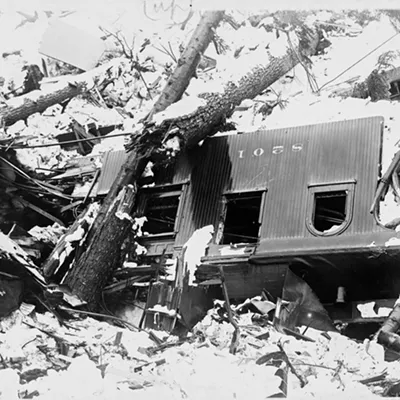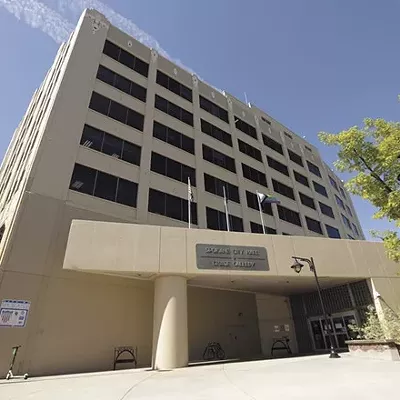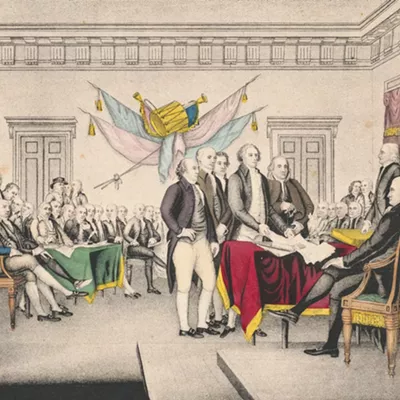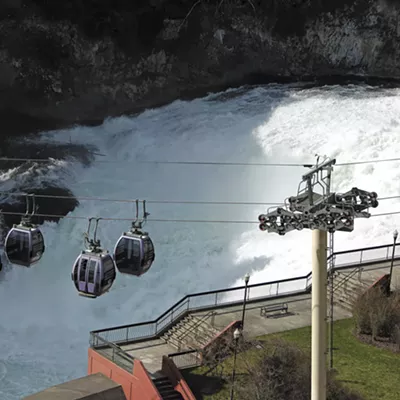Power is back, and downed trees have been removed — most of them, anyway. We're all grateful for the Avista crews who worked night and day, as we are to the teams who came from all over the country to help us through our latest weather calamity. I ran into a team down from Canada, and another from Wisconsin. Stories of people helping people came with the morning paper.
Many parts of the nation, we know, expect even tougher challenges. The Southeast faces a hurricane season every year. New England has its "Nor'easters." The Midwest and South have their tornado seasons. We all know about West Coast earthquakes. Notably, however, most of these areas of the country have moved disaster planning and mitigation front and center, asking some basic questions: How to prepare? What to expect? Where to go?
Here, we seem to have no clue. Why? Because we rely on reactive policies, which call for response-based priorities entirely dependent on reported storm damage. In effect, we do what passes for disaster preparedness and mitigation in a decidedly bass-ackwards way.
In most civil preparedness programs, we always begin with the perception of threat and work from there to frame what we in the Navy termed the "operational requirement," or objective. Then came the policies necessary to respond to those requirements. Lastly came the priorities — and the cost.
Threat perception requires the framing of a hypothetical scenario. In Florida, FEMA and the National Weather Service likely explore several possible storm scenarios — a Category 1 hurricane, Category 2 hurricane and so on. That's the threat. Next comes the question: What is the objective informing the response? Then policies and priorities start to reveal themselves.
In the past 20 years, we've been shut down by an ice storm, a windstorm and several serious winter snowstorms. But neither the city nor Avista seems to have learned anything from these previous storms.
And then there's climate change. Should we not expect to see the time intervals between such storms shortened? Science seems to think so. Which emphasizes even more the immediate need to do some serious disaster mitigation work.
So regarding our hypothetical threats here in the Inland Northwest? Why not another ice storm or windstorm? Perhaps even both on the same day. That's what they call a Worst Case Scenario. Specific objectives? Perhaps getting the power back on throughout the city in, say (pick a goal), not more than three days? Or clearing the streets in, say, 48 hours? The policies designed to meet these goals should clearly speak to workforce needs, scheduling, equipment and effort.
Nor have we done the necessary disaster mitigation research upon which all of the above should be based. Consider: Why did the power stay on downtown? Well, we suppose it was because the power lines are all underground in the downtown area. This realization should raise some questions. Yes, putting power lines underground is more costly, both to lay and to repair. But what are the trade-offs? Moreover, we obviously have some higher risk areas, which invite consideration of specific underground lines. What does our experience over the past two weeks tell us?
I'm quite certain the city has done no informative studies, and if Avista has, they haven't influenced the city's decision-making.
A related question: Assuming that the chief cause of power failures was trees falling into aboveground power lines, which species fared the worst? My quick visual tells me that pines took the worst beating, often breaking off, while spruce didn't do so well either, often uprooted completely. Douglas Firs generally weathered the storm best, as did deciduous trees. Like I say, that's just a visual run-through, but some post-storm research could inform our threat perception, which could influence our objectives, and then our policies and priorities. Such knowledge would certainly help inform future plans regarding our urban forest.
So let's see how disaster mitigation planning might work: First, we postulate the worst snowstorms of the past two decades. Now we know the threat. Next, we set the operational requirement — the time frames noted above.
Combine the two, and we can see the challenges: For one, we will need to get cars off the streets quickly. That can become a policy. So our priorities, driven by that policy, will have to adapt. For example, we quickly discover the first thing we need to do is clear off school and supermarket parking lots. But none of this shows up on our current priority list, because of the many disconnects created by our lack of civil preparedness.
Analysis, planning and research: we've been AWOL on doing any of this. Over the past two weeks, it showed once again. ♦





















